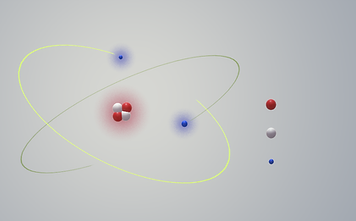

Piezo Accelerometer Tutorial
The Piezoelectric Effect
The Piezoelectric Effect
In this chapter we want to have a closer look at the core materials which are used in piezoelectric accelerometers. Under piezo effect we understand the phenomena that some materials produce an electric charge on their surface when they are deformed by an external force. Or inversely if we apply an electric voltage to a piezo material that it will slightly change its shape. We will see the basic effect, the different ways that we can use it and have a look at particular characteristics of some common piezo materials. But first of all: What really is electric charge?
Electric Charge
What is electric charge?
This is probably one of the most difficult questions to answer. Let’s go for it anyway, at least for a partial answer. The dictionaries say something like:
Electric charge is a fundamental property of matter and it is the cause of all electrical phenomena.
In order to figure this out more precisely we need to dig deep into the matter down to the atoms level.
The atoms are made of three types of particles: Protons, neutrons and electrons. The protons and neutrons form the nucleus in the centre of the atom while the electrons orbit around it like planets around the sun.
The protons and electrons have this very interesting characteristic called electric charge. Electrons have a negative charge, protons have the same but opposite, positive charge. The neutrons are electrically neutral as the name suggests. When the number of electrons is equal to the number of protons the atom shows no net charge.

proton
neutron
electron
The nucleus of the atom is charged positive, indicated by the red colour. Electrons are negative, shown by the blue colour.
It is important to know that equal charges repel and unequal charges attract each other. Negative attracts positive and positive attracts negative, but negative repels negative and positive repels positive.
If we hang up two ping-pong balls and charge them up respecively we can see this phenomenon.
( charge up the ping-pong balls by hovering with the mouse-pointer over the pictures below)


positive and positive repel


positive and negative attract


negative and negative repel
If an object has an excess of electrons it is negatively charged, if it has a lack of electrons it is charged positively.
As the negative charges are attracted so much by the positives they will always try to find a way to come together. This may happen slowly due to a low electrical resisitance or abruptly by a spark between the charges. When the equilibrium is established the object shows no net charge. It is then called neutral. However the charges are still there but they have no external effect, they cancel each other out.
Electric charge cannot be produced in the proper sense but positive and negative charges can be separated. This can happen for example through mechanical friction.
The dimension of electric charge
The electric charge is so to say the amount or quantity of electricity. The physicist uses the letter Q or q for the charge (q from the Latin word “quantum”)
The dimension of the charge is called Coulomb (C) in honour of the French scientist
Charles-Augustin de Coulomb
1 C = 1 A·s (1 Coulomb = 1 Ampere second)
When electric charges flow from point A to B we call it electric current. One Ampere equals to one Coulomb per second (1A = 1C/s)
Examples

The electric current is the base of almost all of our modern
life but besides this we come across electric charges on several occasions. The lightenings in a thunderstorm are very impressive examples of charges seeking the equilibrium. The electric charge which is displaced from a cloud to the ground by a lightening strike is normally only a few Coulombs while the electric energy is in the order of some Giga Joules.
(1 Giga Joule = 1 million kWs or 280 kWh)
This shows very nicely that electric charge and energy are not at all the same!

Charles-Augustin de Coulomb © by Wikipedia, the free encyclopedia
Another phenomenon may occur sometimes when walking on a carpet made of certain materials. In combination with the material of our shoos the friction can separate electrical charges and load up our body. When we touch the next door handle which is connected to the ground we can feel the electric discharge.
The charge in this case is only a few pico-Coulombs.
1 pico-Coulomb (1pC) = 10⁻¹² C or one millionth of a millionth of a Coulomb.
Can you imagine what 10⁻¹² means?

